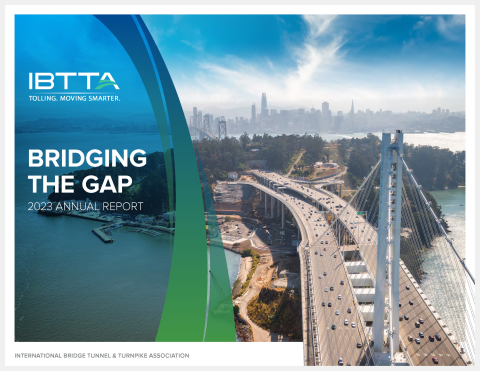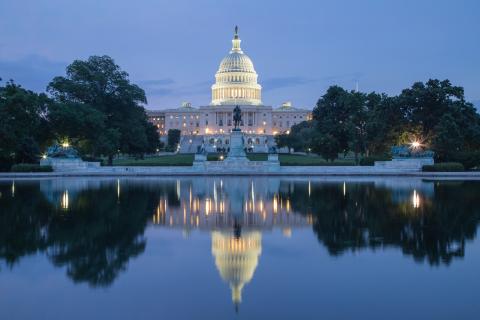- Home
- IBTTA Insights
- Amazon HQ2 Winner Puts Transportation First
Stories
Amazon HQ2 Winner Puts Transportation First


There’s a nugget of hopeful news buried in the flurry of reporting around Amazon’s siting decision for its massive new headquarters (HQ2).
Apart from the jobs and economic spin-offs the e-commerce giant is expected to bring to Crystal City/ Arlington, Virginia and Long Island City, New York, and their surrounding areas, the practical reaction to the announcement shows a level of maturity and forethought that should be a part of any local economic development initiative.
It sounds so simple that it shouldn’t even have to be said: both the news coverage and the local consultations around the Amazon deal are addressing the potential for epic traffic bottlenecks before they occur, rather than scrambling for a solution after problems have emerged.
And it doesn’t hurt that both halves of HQ2 will be located in communities that already have experience with tolling—and, in Northern Virginia, with managed lanes that deliver essential congestion relief in one of the nation’s most crowded highway corridors.
‘Now Comes the Hard Part’
In his assessment of the siting decision last week, Washington Post columnist Steven Pearlstein was blunt.
“The good news about Amazon coming to Washington is that it will add 25,000 high-paying jobs and provide a boost to Washington’s tech and innovation ecosystem,” he wrote. “The bad news is that if, as a region, we don’t use this opportunity to invest in much-needed transportation infrastructure and build more housing, then all we will get out of HQ2 is higher rents and housing prices and longer commutes, which in the long run will end up driving many more than 25,000 other jobs out of the region.”
Note that transportation infrastructure and commute times figured prominently in his analysis. So, did tolling.
“For highway congestion, transportation planners tell me the best fix is to complete a network of uninterrupted toll lanes connecting the Beltway, I-95 North and South and I-270,” he wrote. “All would have dynamic pricing, free travel for car pools and—here’s the big payoff—make it possible for [local transit system] Metro to offer fast and reliable express bus service from the outer suburbs to downtown and major job centers. As Virginians have discovered, such fast-moving toll lanes not only improve life for the commuters who use them, but also for those driving alongside.”
Transportation was also expected to figure prominently in a virtual information session hosted by the City of Alexandria. Transportation and Environmental Services Director Yon Lambert was listed as the second speaker, right after City Manager Mark Jinks, indicating that the community is already thinking hard about how to pro-actively manage the influx of population and traffic.
“I was pleased to see that for two reasons,” says IBTTA Executive Director and CEO Patrick Jones. “First, honestly, because I live in Alexandria, and I’m glad my community is paying attention to the details. But mainly because this very large project could end up a model for putting transportation infrastructure at the center of local economic planning everywhere.”
If You Build It, They Will Come
The situation in Crystal City/Northern Virginia and Long Island City is the opposite of what’s happened in communities that built new tolled infrastructure, then gradually saw the economic benefits accumulate. But either way, the story is the same: If you build it, they will come. (Rumor has it that the same principle applies to magical baseball diamonds carved out of Iowa cornfields.)
“No one should ever just build a tolled facility without demand. It has to be linked to people’s willingness to pay, and the reason they’re willing to pay is that there’s an identified need. There’s an economic opportunity,” said IBTTA President Tim Stewart, Executive Director of the E-470 Public Highway Authority, in an interview last year with Tolling Points.
“E-470 has produced a $38.4-billion increase in real estate value along the corridor since 1986, and the road accounts for 12% of the annual economic activity across the six-county Denver Metropolitan Statistical Area. That’s outstanding, but it’s not unusual. It’s just what tolling does for a local or regional economy.”
In a comment that could hold portents for Crystal City/Northern Virginia and Long Island City, Stewart added that “a tax-supported roadway could have achieved the same thing, but it would absolutely not have been built, if not for tolling, due to a lack of available funding. So the counties and local governments in the region took a very bold leap of faith. They saw this roadway as the future, and they supported it—politically, and to some extent in the initial stages, financially. History has proven them right.”
Like Metro Denver, Crystal City/Northern Virginia and Long Island City now have a chance to make history and get it right. So far, it looks like they’ve got the memo. And their local tolling agencies are ready to assist.

Joining IBTTA connects you to a global community of transportation professionals, offering unmatched opportunities for networking, knowledge-sharing, and collaborative innovation in the tolling and transportation sector.
Follow IBTTA on social media for real-time updates on transportation trends and collaborative opportunities.





